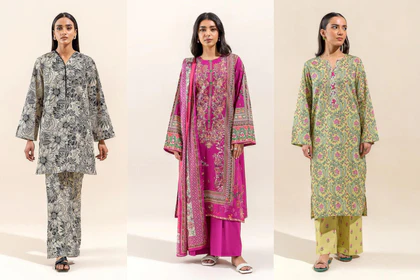Unstitched or Ready-to-Wear? Pros and Cons You Should Know
Shopping for clothes can feel like a maze. Some pick ready-made garments, while others opt to design their own pieces from Maria B unstitched collection. Each choice has its own set of advantages and points to weigh. This guide offers clear pros and cons for shoppers who are out shopping and are confused between choosing ready-made and unstitched clothing.
Unstitched Clothing
Unstitched fabric brings perks that ready items cannot match. It opens doors to a wider world of design and control over fit. For those who enjoy a creative role in style, unstitched cloth can spark pure delight.
Pros
Buying unstitched clothing offers several unique benefits that go beyond what ready-made garments can provide.
1. Unique Designs
Tailoring unstitched cloth allows for rare prints and custom motifs. While shoppers can also mix and match patterns to create a look that stands apart. This high level of choice supports a personal style voice in a crowd of mass-made pieces.
2. Tailored Fit
A made-to-measure garment fits body lines with precision. This reduces the chance of baggy spots or tight stitches. Moreover, tailors can tweak patterns to suit posture and movement, allowing each joint, shoulder, and waistline will sit in just the right place. This fitted edge brings both style and ease to the outfit.
3. Investment in Quality
High-quality unstitched cloth may cost more up front, but it can last for years. For example, a well-made fabric takes washes better and can stand many wears without loss of charm. This makes custom clothes more of an investment than a quick buy.
Cons
The downsides given below may push some shoppers toward readymade options, as it is not a stress-free path for every buyer.
1. Additional Time Required
Turning fabric into a full outfit may need days or weeks. From choosing cuts to the last fitting, each stage asks for discussion and proofing. This timeline may clash with a fast event schedule, like a sudden invitation to a wedding.
2. Need for Skilled Tailor
Not every tailor can handle complex designs or fine materials. Some shoppers may find experts nearby, but others face a hunt. Simple designs may work for most, but high-end fabrics call for top-experienced hands that come at a price.
3. Risk of Alteration Errors
Even skilled hands can misinterpret design specs. A misplaced stitch can distort patterns or warp darts, turning a fix into a costly and time-consuming process. This risk adds stress to the creative journey, and if errors are irreparable, fabric waste increases, leading to extra costs or a change in style.
Ready-to-Wear
Ready-to-wear supplies a simple path from shop to closet. For many, this is a go-to style option.
Pros
Readymade clothing has countless benefits, and some of them are given below.
1. Convenience and Speed
Click-and-buy or in-store pickup makes shopping effortless. No planning needed—just choose, check out, and get a new look. A fresh outfit is just a few clicks away.
2. Wider Selection
Major brands offer a wide range of fits, prints, and sizes in every release, catering to both classic and bold tastes. Seasonal lines and capsule collections keep shelves and web pages stocked with fresh styles. This variety far surpasses the limited options of a small tailor shop, offering endless possibilities.
3. Affordable Pricing
Mass production can bring down unit costs for brands and buyers. Shoppers may spot deals, sales, or clearance picks that cut prices further. For those on a budget, this method feels light on the wallet.
Cons
The fast-buy path comes with trade-offs in fit and feel. Below are the cons of owning ready-made clothing in your wardrobe.
1. Limited Customization
Pre-made garments come as they are, with no options for cut or style. Changing a hem or sleeve may need a visit to a tailor, adding time and cost. Shoppers who crave personal tweaks find such fixed items a block to their vision.
2. Fit Challenges
Even the right size label may not suit everybody’s shape. A small might fit the waist but pinch the arms, while large frees the shoulders but hangs loose at the waist. These mismatches often lead to returns, alterations, or multiple tries before finding a good fit.
3. Fabric Compromises
To speed up making, brands may use lower-grade materials or simple weaves. This can mean fading, pilling, or loose threads after a few washes. Moreover, some finds may look fine on the rack, but show wear fast. So always be careful when getting them.
Conclusion
Picking between unstitched fabric and ready clothes depends on needs, time, and budget. Each route has its own set of gains and trade-offs to weigh. So, it is completely your choice what you want. Whether you want ready-made or unstitched, they both hold a place in your wardrobe.
Keep an eye for more latest news & updates on Hamro Solarllc!






